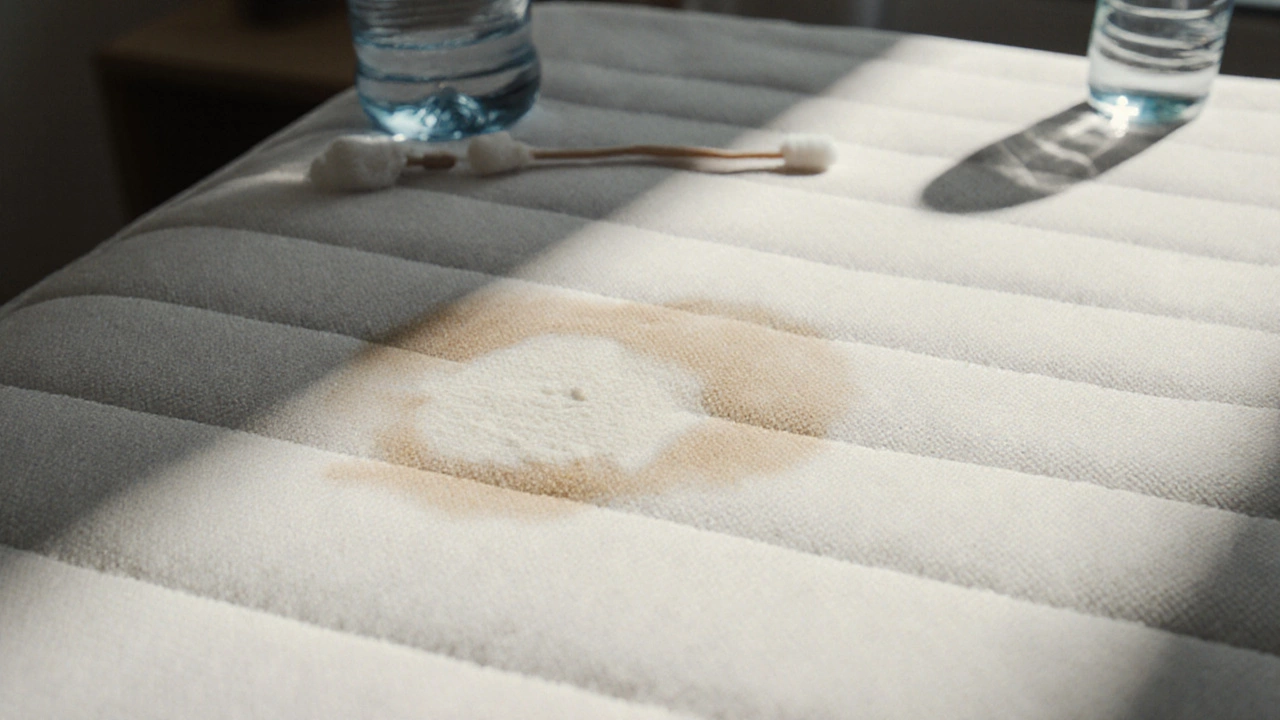Identify Stains: How to Recognize and Treat Common Household Stains
When you spot a stain, the first question isn’t how to remove it—it’s what kind of stain, a substance that leaves a discoloration on fabric, upholstery, or surfaces. Also known as soil or mark, it’s not just dirt—it’s chemistry in action. A red ring on your sofa isn’t the same as a yellow patch on your mattress. One might be wine, another sweat, another pet urine. If you treat them all the same, you’ll make things worse. Knowing how to identify stains, the process of recognizing the source and composition of a discoloration to guide cleaning is the real secret to effective cleaning.
Most stains fall into a few basic categories: protein-based (blood, sweat, baby spit-up), tannin-based (coffee, tea, wine), oil-based (grease, lotion, makeup), and dye-based (ink, food coloring). Each reacts differently to water, vinegar, or enzyme cleaners. For example, hot water sets protein stains, while cold water lifts them. Vinegar breaks down tannins but can damage stone or wood. You don’t need a lab to tell them apart—just look, smell, and think. A musty odor? Likely mold or urine. A greasy shine? Oil. A crusty edge? Salt or dried soda. These clues tell you what you’re up against before you even reach for a cloth.
When you’re dealing with upholstery stains, discolorations on fabric furniture that require careful treatment to avoid shrinking or fading, misidentifying the stain can ruin the material. A pet stain on a velvet couch needs different care than a red wine spill on a linen armchair. The same goes for mattress stains, soils that sink deep into padding and can harbor allergens or odors. A quick wipe won’t cut it—you need to know if it’s sweat, urine, or spilled soda to pick the right cleaner. That’s why the posts below focus on real-world cases: how to spot the difference between old and new stains, why vinegar works on some surfaces but not others, and how DIY recipes change based on what you’re cleaning.
You’ll find practical guides on cleaning fabric sofas, removing stubborn marks from mattresses, and using simple ingredients like baking soda and white vinegar safely. No jargon. No guesswork. Just clear steps based on what the stain actually is. Whether you’re tackling a wine spill after dinner or cleaning up after a pet accident, the right move starts with knowing what you’re seeing. The tools and methods are simple—but only if you start with the right diagnosis.

How to Tell If a Stain on Your Mattress Is Sperm or Vaginal Discharge
Learn how to tell if a mattress stain is sperm or vaginal discharge using visual, smell, and texture clues. Get safe, effective cleaning methods and tips to prevent future stains.
Read More